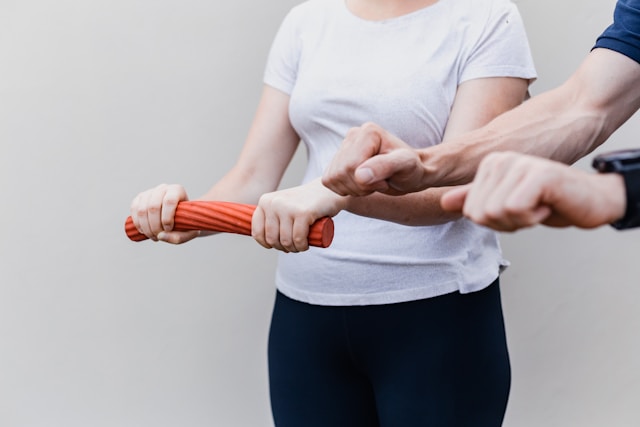Stroke rehabilitation is a growing field that aims to improve the quality of life for stroke patients. As medical research continues to advance, patients and healthcare providers are becoming better equipped to handle the multifaceted recovery process. Remarkably, new stroke treatments are working wonders, bringing hope where there was little before. Understanding these advances and their efficacy can greatly benefit patients and caregivers.
The main goals of stroke rehabilitation are to help patients regain their independence and minimize the impact of stroke on their daily lives. Effective rehabilitation can involve a variety of therapies, such as physical therapy, occupational therapy, speech therapy, and more. By integrating these therapies, patients are more likely to experience improved outcomes and regain the ability to perform daily activities.
Advances in Stroke Treatment
In recent years, medical technology has made significant progress in developing new stroke treatments. This includes advanced treatments such as hyperbaric oxygen therapy and robot-assisted rehabilitation. These innovative approaches have been shown to facilitate the recovery process and bring new hope to stroke patients. Traditional rehabilitation approaches often fail to meet the specific needs of stroke patients; therefore, these new approaches fill a critical gap in treatment.
As we delve deeper into these cutting-edge therapies, it’s clear that they offer more precise, targeted treatment options. For example, hyperbaric oxygen therapy delivers rich oxygen to the brain, promoting healing at the cellular level. Likewise, robot-assisted rehabilitation provides automated and repetitive movements that are critical for rebuilding muscle memory and neural pathways.
The role of hyperbaric oxygen therapy
Hyperbaric oxygen therapy (HBOT) involves breathing pure oxygen in a pressurized room or chamber. This treatment increases the amount of oxygen delivered to the brain, thereby promoting faster healing. Research shows that HBOT can improve neurological function after stroke and significantly aid recovery. Patients who participate in HBOT often report better cognition, enhanced memory, and improved motor function.
The science behind HBOT is very interesting. By increasing atmospheric pressure, the body can absorb more oxygen than under normal conditions. This elevated oxygen level helps reduce inflammation and promote tissue repair. HBOT has also been shown to stimulate the growth of new blood vessels, further aiding recovery.
Benefits of Robot-Assisted Rehabilitation
Robot-assisted rehabilitation uses advanced machinery to help patients perform specific movements. This method is particularly beneficial for restoring motor function and muscle strength. Research shows that robot-assisted rehabilitation can speed recovery and provide more consistent and repeatable movements than traditional treatment methods. As a result, patients can regain motor function more effectively and efficiently.
The precision of robotic systems allows for the replication of fine movements, which is crucial for rebuilding muscle memory. These machines can adjust the level of assistance based on the patient’s progress, making treatment highly adaptable. Additionally, data collected from these sessions can be analyzed to track improvements and further tailor treatment to the patient’s unique needs.
The importance of personalized treatment planning
No two strokes are the same, and a personalized treatment plan is essential for adequate recovery. Customizing the treatment approach to each patient’s individual needs can lead to more successful outcomes. Customized programs can address specific weaknesses and strengths to maximize the effectiveness of recovery. These customized approaches often involve a combination of treatments targeting various aspects of rehabilitation, from physical rehabilitation to cognitive therapy.
Customized treatment plans can significantly improve patient compliance and motivation because treatment methods are more aligned with the patient’s personal goals and abilities. You can read more about advances in personalized medicine from reliable sources like the National Institutes of Health. This approach improves outcomes and enhances the overall experience for patients and caregivers.
The future of stroke rehabilitation
The future of stroke rehabilitation looks very promising, with ongoing research and innovation continuing to drive new treatment possibilities. Researchers are exploring all aspects of stroke treatment, from advanced imaging techniques to novel drug therapies, with the goal of improving stroke diagnosis and treatment. As the medical community continues to push boundaries, we can expect more advanced and effective rehabilitation options for stroke patients.
Long-term rehabilitation often requires ongoing monitoring and adjustments to treatment to ensure optimal patient progress. With advances in wearable technology and telemedicine, ongoing support and intervention can be provided remotely, making it easier for patients to get the care they need. These innovations will revolutionize stroke recovery and bring more hope to patients and families.
public awareness and education
Increasing public awareness and education about stroke prevention and recovery is critical to reducing the incidence and impact of stroke. The organization continuously strives to communicate valuable information to the public, such as innovations reported by trusted medical news sources. These measures play a vital role in promoting early intervention and encouraging preventive measures that can significantly reduce the incidence of stroke.
Educational campaigns often emphasize the importance of recognizing stroke symptoms early and seeking immediate medical attention. Public awareness efforts also aim to educate the public about lifestyle changes that can reduce the risk of stroke, such as controlling blood pressure, maintaining a healthy diet and exercising regularly. Learn more about stroke awareness efforts on the CDC website.
in conclusion
Stroke rehabilitation is evolving rapidly as new technologies and therapies become available. By staying informed and using these innovative treatments, patients and healthcare providers can significantly improve recovery outcomes, giving stroke patients hope and a better quality of life. Continued research and public awareness efforts have further improved the effectiveness of these treatments, ushering in a new era of stroke recovery.

